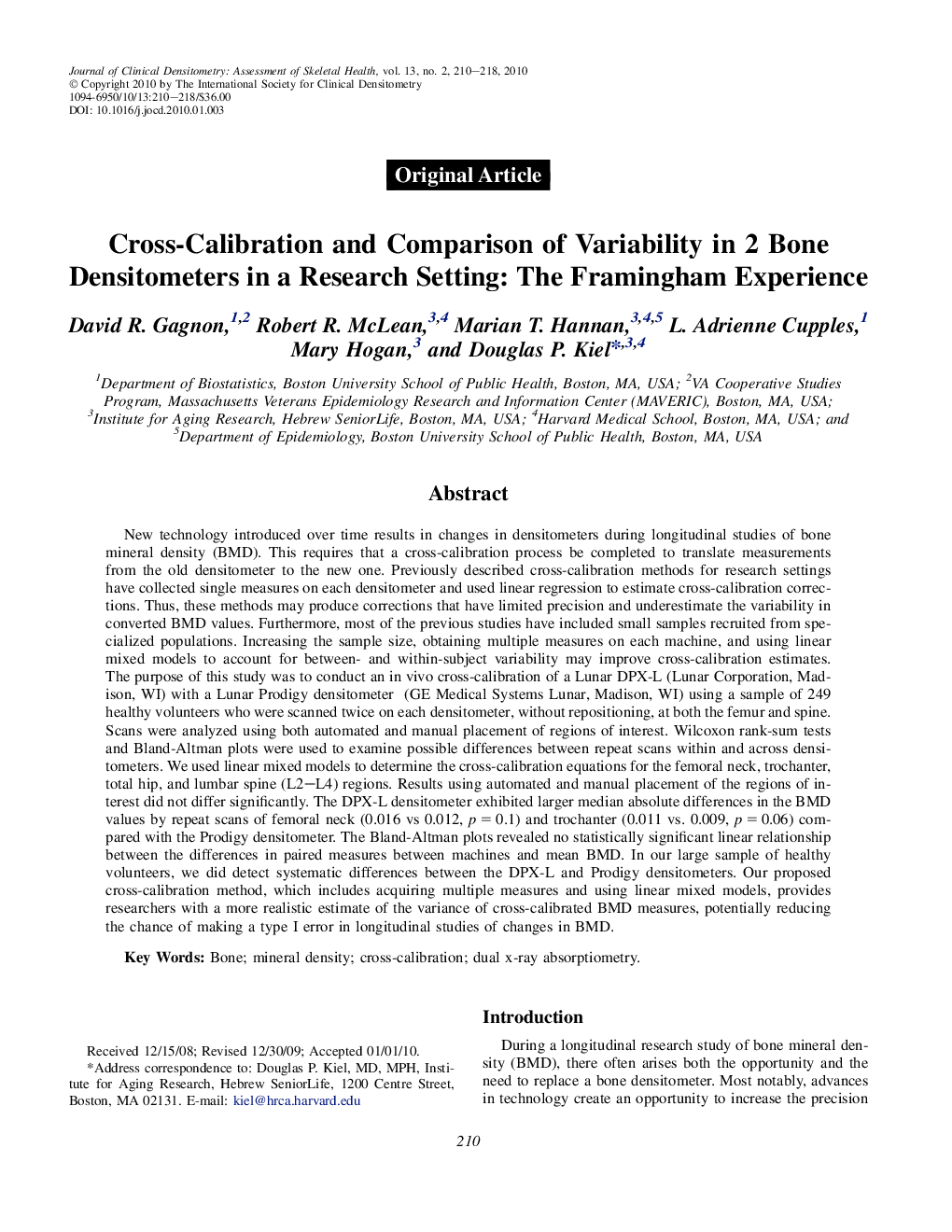| Article ID | Journal | Published Year | Pages | File Type |
|---|---|---|---|---|
| 3271289 | Journal of Clinical Densitometry | 2010 | 9 Pages |
Abstract
New technology introduced over time results in changes in densitometers during longitudinal studies of bone mineral density (BMD). This requires that a cross-calibration process be completed to translate measurements from the old densitometer to the new one. Previously described cross-calibration methods for research settings have collected single measures on each densitometer and used linear regression to estimate cross-calibration corrections. Thus, these methods may produce corrections that have limited precision and underestimate the variability in converted BMD values. Furthermore, most of the previous studies have included small samples recruited from specialized populations. Increasing the sample size, obtaining multiple measures on each machine, and using linear mixed models to account for between- and within-subject variability may improve cross-calibration estimates. The purpose of this study was to conduct an in vivo cross-calibration of a Lunar DPX-L (Lunar Corporation, Madison, WI) with a Lunar Prodigy densitometer (GE Medical Systems Lunar, Madison, WI) using a sample of 249 healthy volunteers who were scanned twice on each densitometer, without repositioning, at both the femur and spine. Scans were analyzed using both automated and manual placement of regions of interest. Wilcoxon rank-sum tests and Bland-Altman plots were used to examine possible differences between repeat scans within and across densitometers. We used linear mixed models to determine the cross-calibration equations for the femoral neck, trochanter, total hip, and lumbar spine (L2-L4) regions. Results using automated and manual placement of the regions of interest did not differ significantly. The DPX-L densitometer exhibited larger median absolute differences in the BMD values by repeat scans of femoral neck (0.016 vs 0.012, p = 0.1) and trochanter (0.011 vs. 0.009, p = 0.06) compared with the Prodigy densitometer. The Bland-Altman plots revealed no statistically significant linear relationship between the differences in paired measures between machines and mean BMD. In our large sample of healthy volunteers, we did detect systematic differences between the DPX-L and Prodigy densitometers. Our proposed cross-calibration method, which includes acquiring multiple measures and using linear mixed models, provides researchers with a more realistic estimate of the variance of cross-calibrated BMD measures, potentially reducing the chance of making a type I error in longitudinal studies of changes in BMD.
Related Topics
Health Sciences
Medicine and Dentistry
Endocrinology, Diabetes and Metabolism
Authors
David R. Gagnon, Robert R. McLean, Marian T. Hannan, L. Adrienne Cupples, Mary Hogan, Douglas P. Kiel,
